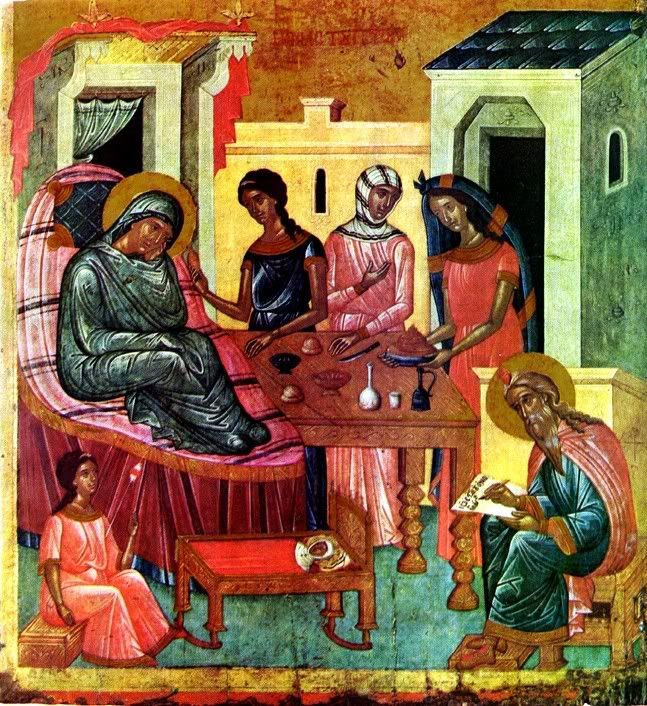The nativity of St. John the Precursor
Τò Γενέθλιον το τιμίου, ἐνδόξου, προφήτου, Προδρόμου καί Βαπτιστο Ἰωάννου
ΠροφÒτα καὶ Πρόδρομε τÒς παρουσίας ΧρίστοÂ, ἀξίως εὐφμÒσαί σε οὐκ εὐποροÂμεν ἡμε²ς, οί πόθῳ τιμòντές σε· στείρωσις γὰρ τεκούσης καὶ πατρὸς ἀφωνία λέλυνται τÞ ἐνδόξῳ καὶ σεπτÞ σου γεννήσει, καὶ σάρκωσις Υἱο το Θεο κóσμῳ κηρύττεται.

The Nativity of St. John The Precursor.
Byzantine icon.
XVth century.
65 x 63.
Egg tempera over gesso; wood.
On the left is Elizabeth seated on the couch; at the foot of the couch is the infant John in a crib, and a woman spinning. On the right is Zacharias, seated; he writes. In the middle is a table with diverse vessels on it; and three servant girls standing at the table. The scene is set against an architectural background; on the left there is a building with a velum. The icon is remarkable for the depth and richness of colouring. The ground is gold.
The inscription in red reads: ΗΓΕΝΗΣ[ΙΣ] ΤΟΥ [ΠΡΟ]ΔΡ[ΟΜ]ΟΥ (The Nativity of the Precursor). On the reverse are traces of slatting. The richness of colouring, the presence of genre motifs, and the dry manner of execution typical of the period of decline in Byzantine painting, make the icon datable to the XVth c.

Thaumaturgical image of St. John the Precursor.
XVIIth c. St. Jovan Bigorski Church.
Macedonia, the monastery of St. Jovan Bigorski.

Church interior. St. Jovan Bigorski Church.
Macedonia, the monastery of St. Jovan Bigorski.